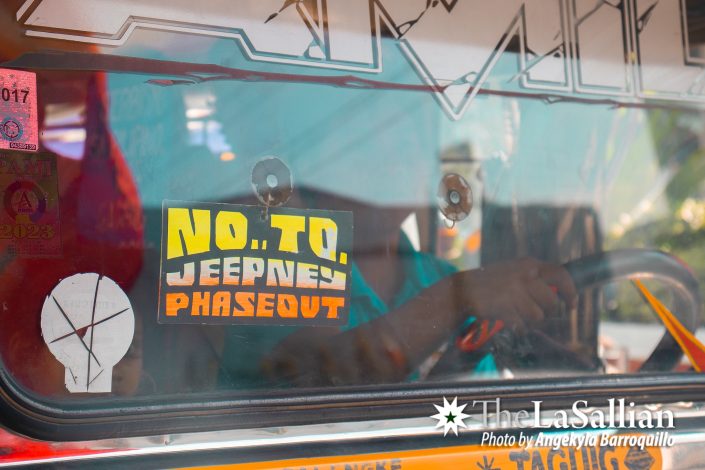Jeepneys have become an icon in the culture of the Filipinos. Back in the period of American colonization, an abundance of jeepneys were left over by the foreign troops, starting the enculturation of the jeep as one of our main modes of transport. From then until now, jeepneys have stayed with the Filipinos, along with their quirky designs, paintings, and sayings on the exterior. On the inside, there sits the jeepney driver, moving people from home to work with his vehicle for a measly price of 8 Pesos.

Full hours
Eduardo Sy has been driving for 20 years now. Originally a factory worker then a cigarette vendor, Kuya Eduardo’s driving career started when his brother urged him to learn how to drive by buying him a jeep.
“Twenty years na akong driver. Hanggang ngayon hanapbuhay ko talaga siya,” he shares. Only 17 when he started his life as a jeepney driver, he is now almost 40 with a wife and four children. (I have been driving for 20 years. It has been my occupation since.)
Usually starting his drive at 7 in the morning, he works full hours along the Gil Puyat/Buendia route until 9 pm. He emphasizes that he has and enjoys his lunch breaks, “Kung di tayo kakain, mamamatay tayo!” (If we don’t eat, we die!)
To him, driving is everything. He and his family are able to eat because of it. Although the blue jeep he used to own now belongs to an operator, he plans to buy his own once he gets enough money.
Phasing out and other woes
Classes have been suspended in the past weeks because of transport groups’ strikes against the phasing out of the jeepneys. Kuya Eduardo was on the front row of the last one.
“Pinag-uusapan pa kasi, may plano plano silang di pa naman natutupad. Kasi yung mga namumuno, di naman kami napakikinggan, sinisiksik lang yung mga gusto nila,” he argues. (The plans [for phasing out] are still being talked over. Nothing is final. The ones on top, they never listen. They just do what they want.)
He is strongly against phasing out jeeps. He believes that for many jeepney drivers, this will become a bigger problem than the one the government is currently trying to solve.
Kuya Eduardo has expressed concern over the jeepney phase-out. Jeepney drivers and operators are the ones most affected if the government plans to disallow old jeepneys from plying their routes. If this plan pushes through, dozens of people will be left without any means of supporting themselves and their families.
As someone who does not own his own jeepney, Kuya Eduardo would be hit harder compared to jeepney drivers who are lucky enough to own their vehicles. He revealed that he gets a fixed amount of profit each day, and it does not change if he manages to earn more. “The operator gets the surplus,” he said in Filipino. So not only will the driver lose his main source of livelihood, the operator will lose profit if the jeepneys are off the roads.
Kuya Eduardo’s main problem with the jeepney phase out is that it seems as if the government has no backup plan to help those drivers who will be affected. “Have you noticed that the transport strikes are bigger and happening more frequently?” he asked in Filipino. “It’s because no one listens to us. What else can we do?”
To Kuya Eduardo, their pleas are falling on deaf ears. All anyone can see are the benefits they reap by having the old jeepneys off the roads, and not many care for the poor families affected by the phase-out. In the life of a jeepney driver, this is another huge bump in the road.
Positive notes
Despite the many problems that jeepney drivers and transport groups face, Kuya Eduardo will never let go of the wheel. His heart belongs to the smoke-filled, traffic bound streets where adventure lies and interesting stories await him.
“Hahanap-hanapin yun,” he says when asked if he will ever retire. Aside from this being his main source of income, he has been doing this for more than half of his life. He even has colleagues who have risen out of poverty because of driving jeeps, but still continue to drive as a profession. (You will always look for that feeling.)
Someday, Kuya Eduardo hopes to buy his own jeepney that will bring his family better fortune. He reminds us that he does this all out of love for his family; he sacrifices so much for them just so they can eat and have enough money left for other expenses.
For Kuya Eduardo, each passenger is a step closer to a better life for his wife and three kids. Each mile he conquers on the daily bridges the gap between where he is now and where he wants to be.
